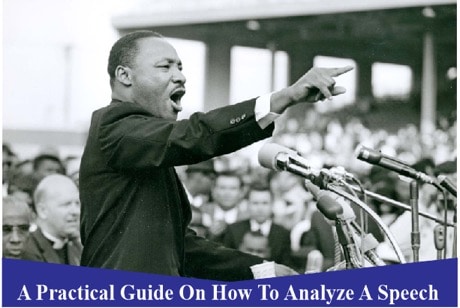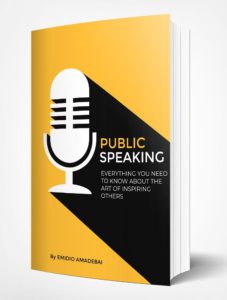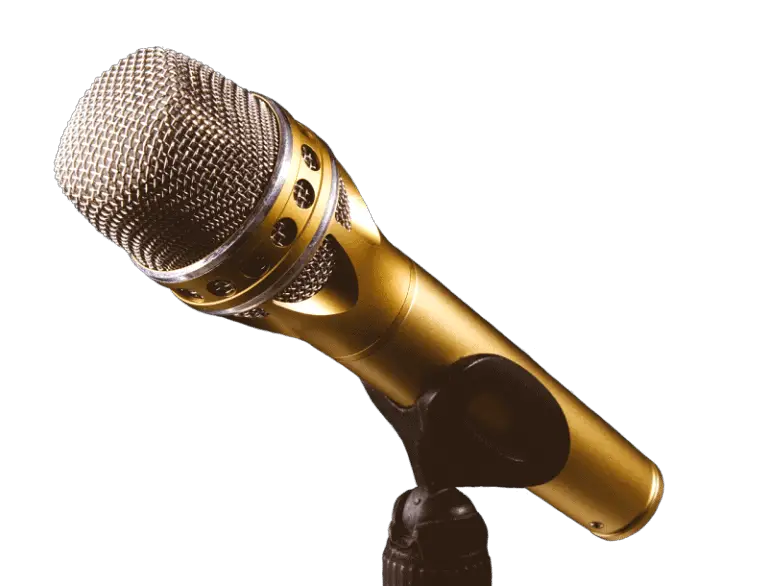A 9-Step Practical Guide On How To Analyze A Speech – Speech Analysis of I have A Dream Speech as an Example
A speech, as we all know, is a vocal opinion of a speaker’s stand. Speeches are usually used as an effective tool for rallying support, conveying opinion, as well as influencing the thoughts of others (usually the audience) to accept or agree with the thoughts of the Speaker.
For a speech to achieve its goal, the words used in a speech are usually chosen carefully. This is so because, through a speech, the audience can perceive the interest or personal motives of the Speaker.
However, in most cases, there is usually a need to consider what was not said in a speech, or what the motive of the Speaker was. For this reason, speech analysis comes in handy in order to have a full understanding of a speech.
What is Speech Analysis?
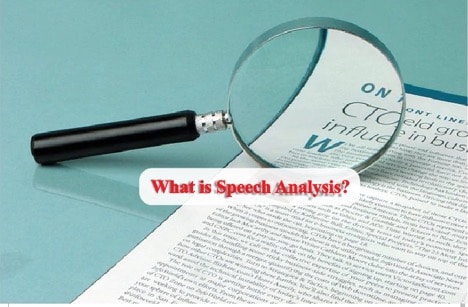
In its simplest form, speech analysis or speech interpretation can be said to be the process of extracting important pieces of information that are contained in a speech. When carrying out speech analysis, there is usually a need to take note of some essential and necessary components of the Speech. These include;
1. Analyzing the purpose or intent of the Speech
For instance, a speech may be written to entertain the audience with some humorous lines, persuade the audience into thinking or agreeing with the opinion of the Speaker, or to inform the audience about something which the Speaker is skilled in.
2. The target audience and how the Speech relates to them
Also of paramount importance during speech analysis is taking note of who the target audience is, and how the Speech relates to the audience.
For instance, when analyzing a speech that was delivered to support the need for a pay rise in an organization, in that case, it will be expected that the audience listening to such a speech will be members of staff of the organization who are clamoring for a rise in their pay.
And in the above situation, the Speech is expected to contain some specific wordings, examples, dates, and anecdotes that relate to the audience.
3. The effective and validity of the Speech
Finally, when carrying out speech analysis, another core aspect to consider is the effectiveness and validity of the Speech to see whether or not it contains relevant and important proofs such as examples, statistics, facts, and dates to back the claims contained the Speech.
Still using the same above example about a speech about a pay rise in an organization, the Speaker may have to include facts such as the agreed terms for a pay rise in the organization.
With that, such a speech would be said to have concrete facts and evidence to support its claims and the need for it.
Highly Recommended Next Articles
7 Basic Components of Public Speaking & Tips for Effective Delivery
What is the First Step in Rhetoric Analysis?
The Structure of a Speech
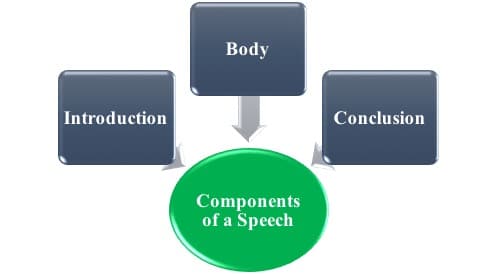
Although a speech can be written and presented in more ways than one, every Speech usually shares three basic elements in common. These elements include;
- The Introduction of a Speech
The introduction of a speech is one of the most important elements of a speech since it is usually designed to grab the attention of the audience, either with a hook, a preview of what the Speech is all about, a joke, a controversial statement, a startling statistics, why the Speech is important, or a powerful visual.
Introducing a speech with such powerful elements is an excellent way to give the audience reasons why they should listen to the Speaker, instead of starting with a dry “hello everyone, it’s a great privilege to talk to you today.”
Due to the ultimate role which the introduction of a speech plays, making the right choice of other key elements such as body language, words, and other visuals to usher in a speech are all very important to make the introduction of a speech achieve its goal.
- The Body of a Speech
After the introduction comes the body of a speech, which is the part that contains the Speaker’s main points. These points are usually expected to be supported with relevant examples, details, statistics, and facts, which are explained in simply and concisely.
In the body of a speech, the Speaker should make necessary effort to ensure that all the facts and pieces of evidence presented in the Speech aligns with the primary objective of the Speech. As mentioned earlier, these facts and proofs should all be presented in a simple and clear language for the understanding of the audience.
- The Conclusion of a Speech
The concluding part of a speech also packs as much power as the other two parts mentioned earlier.
In the conclusion section, the Speaker makes a substantial effort to remind the audience of the major points made in the Speech and then ends the Speech with thought-provoking words that will motivate the audience to respond to the final call to action in the Speech.
Also, in the conclusion of a speech, the Speaker should be concise about what he expects from the audience, whether it is for a petition to be signed, requesting their support, for a product to be bought, or for some other specific actions from the audience as contained in the Speech.
How to Analyze and Interpret a Speech? 9 Key Questions to effective speech Analysis.
When analyzing a speech, there are usually some things, precisely nine questions that you must consider for effective speech analysis.
However, when analyzing a speech, don’t feel satisfied by merely outline these nine important questions in the Speech and answering them. Instead, there should be a complementary explanation or example of how these nine key questions work using a speech as an example. So, in analyzing a speech, here are the 9 key questions you must give appropriate answers to for effective speech analysis.
1. Who is the Speaker?
In analyzing a speech, you have to consider who is the Speaker, and how does the Speaker’s rank, position, personal views, motives, or experience affect the Speech.
2. Who is/are the Audience?
In this case, you have to consider who are the members of the audience. By so doing, you will have to look closely to know whether or not the audience are the people who are directly affected or needs the message conveyed by the content of the Speech.
3. What is the Type of Speech?
By considering the type of Speech under analysis, you try to dig deeper to know the motive or intent of the Speaker for the Speech.
In this regard, the Speech delivered might be one that is intended to inform or educate the audience, entertain, or even persuade the audience to take certain steps of action.
4. What is the Structure of the Speech?
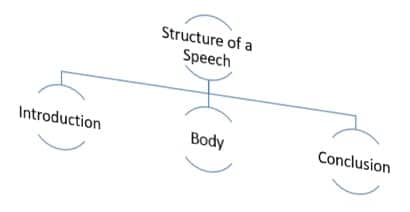
By analyzing the structure of the Speech, you are to consider how the Speech is being structured by the Speaker. In this case, you are required to analyze whether or not the Speech was well-structured into an introduction, a body and a conclusion.
Also worthy of note about the structure of a speech during analysis is checking to see whether or not there is a governing or central idea that is being captured in every bit of the Speech.
5. What is the Purpose of the Speech?
Like I mentioned earlier, every Speech is usually aimed at achieving a purpose. For some, the purpose might be to persuade the audience, entertain, or even to open the eyes of the audience about a piece of information they are yet to know.
With this, it is therefore very important to consider the purpose of a speech to know the mission of the Speaker when carrying out speech analysis.
6. What is the Content/Circumstances of the Speech
In evaluating the content and circumstances of a speech, you consider the events that have created the need for the Speech. In doing this, you may have to pay closer attention to specific elements such as;
- Where the Speech is taking place, and how the choice of the geographical location of the Speech affects the acceptance of the Speech by the audience
- When the Speech is being delivered. This is very important because there might a special time or event that is currently going on, which may serve as the best time to deliver such a speech.
- Why is the Speech being delivered? In this case, you look at the reason why the Speaker is giving a speech, and by so doing, you also consider the expectation of the Speaker from the Speech.
7. What are the Techniques used by the Speaker?
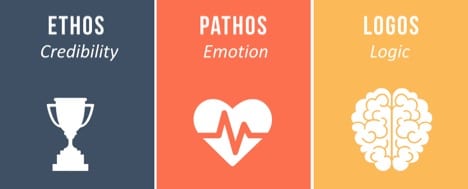
Techniques employed by the Speaker are usually the various modes of persuasion, in which the Speaker adopts. These techniques are also known as rhetorical appeals, and they are ways of persuading the audience to believe the Speaker’s point of view.
As a way of swaying the audience to buy the Speaker’s point of view, a speaker may adopt Aristotle’s mode of persuasion known by the names;
- Ethos – persuading the audience through the credibility, authority, experience, and personality of the Speaker
- Pathos – persuading the audience by creating an emotional response, which may either fear, happiness, or sadness through a convincing story or an impassionate plea.
- Logos – persuading the audience through the use of logic, figures, facts, and data in a speech.
Also very important when analyzing a speech is looking out for the use of stylistic devices such as the use of contrast in a statement, repetition (the rule of three using triads), irony, or even imagery by the Speaker.
8. Is the Intention of the Speech Achieved?
By analyzing a speech to see whether or not it has achieved its purpose, you may have to carry out some evaluations to ascertain if the Speech was successful.
In doing this, you may have to consider whether or not a speech;
- Affected/impacted the target audience
- Fit into the occasion which it was delivered
- Is convincing
- Use of ethos, pathos, and logs was balanced
- The argument is valid or solid.
9. What is the overall result of the analysis of the Speech?
After a thorough evaluation of a speech, you should be able to come up with a complete summary of the speech analysis outcome. Obviously, this will come as a result of the analysis of the various parts and components of the Speech as mentioned by the various questions above.
PUBLIC SPEAKING e-BOOK LAUNCH!
BEFORE we go into the Speech Analysis Example…
I would like to announce that you can get more insightful tips and how-to’s from our launched eBook, now available at Barnes & Noble, at $4.99. We tried to pack it with valuable information and price it below $5 to be as inclusive as possible with our pricing. Click below and Get a Copy!
The next point of discussion is a practical example of how to make a speech analysis by using the nine-step approach shared. Before digging into that, let me add below some of the top related and interesting articles that can add to what you’re learning from this one. If any of the titles picks your interest, please click and open in a new tab, so you can check them out later. Enjoy!
-
The 4 Methods or Types of Speech Delivery
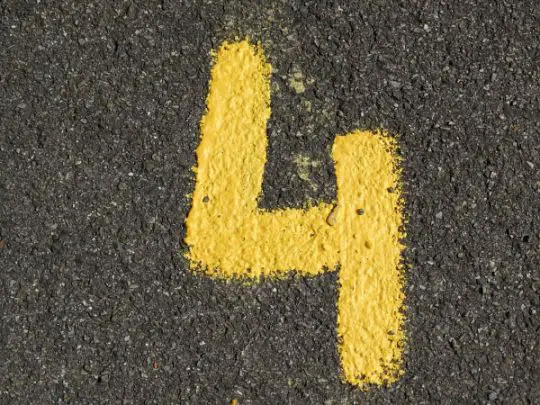
On a daily basis, people use several types of speech delivery to connect with others, influence decisions, and motivate change without realizing which occasions a specific method of speech delivery should be used. Today we will talk about 4 types of speech delivery that are commonly used and sometimes happen almost unnoticed. Manuscript Speech Memorized…
-
The 7 Basic Elements of Public Speaking

Remember that time you had to present a topic in front of a crowd? Probably it was a proposal at work or an oral report in grade school. You took the time to prepare and gather materials, after which you climbed the podium and started talking. There are seven basic elements of public speaking that…
-
An Easy Guide to All 15 Types of Speech

We keep learning that there are three types of speeches, informative speeches, persuasive speeches and special occasion speeches. However, I believe and know that there are many more such as debates, motivational speeches, forensic speeches, impromptu speeches, eulogy, and so on. Here’s a growing list of over 13 types of speech and tips on how…
Analyzing the I Have A Dream Speech by Martin Luther King Jr
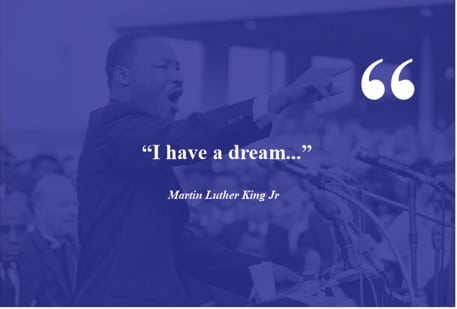
In a bid to have a full understanding of how the various questions that should be considered when carrying out speech analysis work, we shall be considering the heroic Speech delivered by a civil rights leader – Martin Luther King Jr, on August 28, 1963, in front of the Lincoln Memorial Mall.
Before we go straight into the analysis of the “I Have A Dream” Speech, let’s take a quick look at the context of the Speech.
Exactly 100 years ago, the US President, Abraham Lincoln signed the Emancipation Proclamation of negro slaves in the US, and in 1963 in which the emancipation proclamation was due, it was time for negro slaves to gain absolute freedom and civil rights in the US.
It was in response to this long-awaited dream come true that Martin Luther King Jr and other civil rights activists made the March on Washington in a peaceful protest to have the present parliament in 1963 to enact the emancipation proclamation and put an end to their years of captivity.
Related Article: The I Have A Dream Speech by Martin Luther King Jr (with Video+Audio+Full Transcript and Historical Context)
Alternatively, you can just watch the 17 minutes full Speech through the link below;
Below are some excerpts of the “I Have A Dream” speech by Martin Luther King Jr at the Lincoln National Mall, interspersed with my analytical thoughts in a bid to answer the 9 key questions you must ask when analyzing a speech.
1. Who is the Speaker?
The Speaker, in this case, is Martin Luther King Jr, who is a prominent negro civil rights activist fighting to secure freedom and emancipation for his fellow negroes.
2. Who is/are the Audience?
The audience who are physically present and listening to Martin Luther’s “I Have A Dream” speech is majorly the African Americans who are also joining their voices in the fight for their emancipation.
Also, present during the Speech are other “white” skin American citizens who are probably in support of the emancipation protest by the negroes.
However, it is evident that members of media were present to cover the event, and so it is obvious that the Speech was open to everyone who could have access to a live stream of the Speech
3. What is the Type of Speech?
“And so, we’ve come to cash this check, a check that will give us upon demand the riches of freedom and the security of justice.”
From the excerpt above, it is obvious that Martin Luther’s Speech was a call demanding for the freedom and the enactment of the civil rights decree in favor of the negroes.
4. What is the Structure of the Speech?
Although Dr. King’s Speech wasn’t divided into distinct parts with an introduction, body, and conclusion, the Speech is, however, seen to be coherent with a smooth flow of information.
He started by reminding his fellow negroes about the history of the emancipation proclamation by Abraham Lincoln.
“Five score years ago, a great American, in whose symbolic shadow we stand today, signed the Emancipation Proclamation. This momentous decree came as a great beacon light of hope to millions of Negro slaves who had been seared in the flames of withering injustice. It came as a joyous daybreak to end the long night of their captivity.”
From there, the Speaker, Martin Luther, went further to remind his audience of the undue injustice and oppression the negroes were going through in various parts of America despite the vast national resources available for all to benefit from.
“But one hundred years later, the Negro still is not free. One hundred years later, the life of the Negro is still sadly crippled by the manacles of segregation and the chains of discrimination. One hundred years later, the Negro lives on a lonely island of poverty in the midst of a vast ocean of material prosperity. One hundred years later, the Negro is still languished in the corners of American society and finds himself an exile in his own land.”
Finally, as Martin Luther’s conclusion, there was a call to action for the emancipation and freedom of the negroes in every part of America by the then government.
“And so let freedom ring from the prodigious hilltops of New Hampshire.
Let freedom ring from the mighty mountains of New York.
Let freedom ring from the heightening Alleghenies of Pennsylvania.
Let freedom ring from the snow-capped Rockies of Colorado.
Let freedom ring from the curvaceous slopes of California.
But not only that:
Let freedom ring from Stone Mountain of Georgia.
Let freedom ring from Lookout Mountain of Tennessee.
Let freedom ring from every hill and molehill of Mississippi.
From every mountainside, let freedom ring.”
5. What is the Purpose of the Speech?
From the content of Dr. King’s Speech, it is very obvious that the purpose of the Speech was to persuade the American government in 1963 to sign and enact the civil rights law that will bring absolute freedom and emancipation to the African American amongst them.
“We have also come to this hallowed spot to remind America of the fierce urgency of Now. This is no time to engage in the luxury of cooling off or to take the tranquillizing drug of gradualism. Now is the time to make real the promises of democracy. Now is the time to rise from the dark and desolate valley of segregation to the sunlit path of racial justice. Now is the time to lift our nation from the quicksands of racial injustice to the solid rock of brotherhood. Now is the time to make justice a reality for all of God’s children.”
6. What is the Content/Circumstances of the Speech
Firstly, the circumstances that necessitated Martin Luther’s Speech was the undue segregation mated out to the negroes in America.
“There are those who are asking the devotees of civil rights, “When will you be satisfied?” We can never be satisfied as long as the Negro is the victim of the unspeakable horrors of police brutality. We can never be satisfied as long as our bodies, heavy with the fatigue of travel, cannot gain lodging in the motels of the highways and the hotels of the cities. We cannot be satisfied as long as a Negro in Mississippi cannot vote, and a Negro in New York believes he has nothing for which to vote. No, no, we are not satisfied, and we will not be satisfied until “justice rolls down like waters, and righteousness like a mighty stream.”
Also worthy of note and analysis is the geographical location where the Speech was delivered and the choice of such location.
In this case, Martin Luther’s Speech was delivered at the Lincoln National Mall, just in front of the statue of Abraham Lincoln. And the choice of this place was to bring to mind the fact that about 100 years ago, Abraham Lincoln, whose statue is right behind the Speaker, signed the Emancipation Proclamation of the negroes in America.
“Five score years ago, a great American, in whose symbolic shadow we stand today, signed the Emancipation Proclamation. This momentous decree came as a great beacon light of hope to millions of Negro slaves who had been seared in the flames of withering injustice. It came as a joyous daybreak to end the long night of their captivity.”
The choice of the time at which the Speech was delivered was the perfect timing since it was precisely 100 years after the Emancipation Proclamation was made by Abraham Lincoln.
7. What are the Techniques used by the Speaker?
In an attempt to persuade and convince the audience of the need for the negro’s freedom and emancipation, Martin Luther employed pathos to stir up an emotional response of sadness about the undue injustice the negroes were going through;
“I have a dream that one day on the red hills of Georgia, the sons of former slaves and the sons of former slave owners will be able to sit down together at the table of brotherhood.”
“I am not unmindful that some of you have come here out of great trials and tribulations. Some of you have come fresh from narrow jail cells. And some of you have come from areas where your quest — quest for freedom left you battered by the storms of persecution and staggered by the winds of police brutality. You have been the veterans of creative suffering.”
Dr. King also employed logos to give data and figures that will support his call for the emancipation of the African Americans.
“Five score years ago, a great American, in whose symbolic shadow we stand today, signed the Emancipation Proclamation.”
He also invoked a sentiment of nostalgia and the figure of the President Abraham Lincoln, who he clearly calls a “Great American”, the man who signed and declared the emancipation of negroes, but also was hailed as a hero by both white and negroes.
I also noted the use of irony to express the supposed reasons why the negroes are undergoing injustice and segregation in America.
“But we refuse to believe that the bank of justice is bankrupt. We refuse to believe that there are insufficient funds in the great vaults of opportunity of this nation. And so, we’ve come to cash this check, a check that will give us upon demand the riches of freedom and the security of justice.”
8. Is the Intention of the Speech Achieved?
Although the Speech wasn’t intended to convince or persuade the audience to accept or agree to the need for the emancipation of the negro, since the majority of the audience who present during the Speech were all civil rights activists protesting for the passage of the civil rights law.
However, the “I Have A Dream” speech by Martin Luther King can be said to have achieved its intentions, especially as it helped the African American to secure the passage of the civil rights law into effect later in 1964.
9. What is the overall result of the analysis of the Speech?
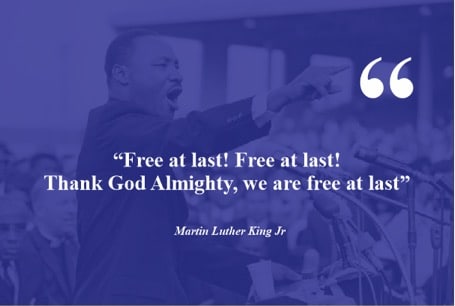
In summary, I think that the “I Have A Dream” speech by Martin Luther King Jr was a timely call for the freedom of the negroes in America after the successful completion of 100 years after the emancipation proclamation by Abraham Lincoln.
The choice of the geographical location for the Speech was apt, and it was the perfect place to call to mind the emancipation proclamation for the negroes.
The use of various speech techniques such as the use of pathos and logos by Martin Luther was a good way to connect with the audience and make them see the urgent need for why African Americans needed to secure civil rights in America. Finally, concluding his speech with a call for freedom to reign in every part of America, where the negroes were undergoing injustice, was a very good way in which Martin Luther King Jr used in ending his Speech.
References
- https://study.com/academy/lesson/practice-analyzing-and-interpreting-a-speech.html
- http://sixminutes.dlugan.com/speech-evaluation-1-how-to-study-critique-speech/
- http://jorgenboge.wikidot.com/how-to-analyze-a-speech
- http://www.readwritethink.org/files/resources/lesson_images/lesson885/speech-analysis.pdf
- https://mannerofspeaking.org/speech-analyses/
- https://examples.yourdictionary.com/examples-of-ethos-logos-and-pathos.html
- https://www.theclassroom.com/write-irony-literary-essay-14211.html

